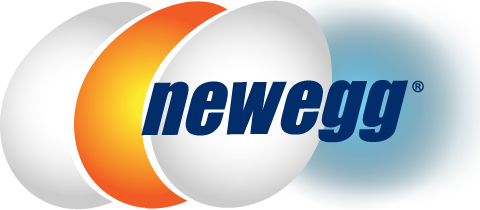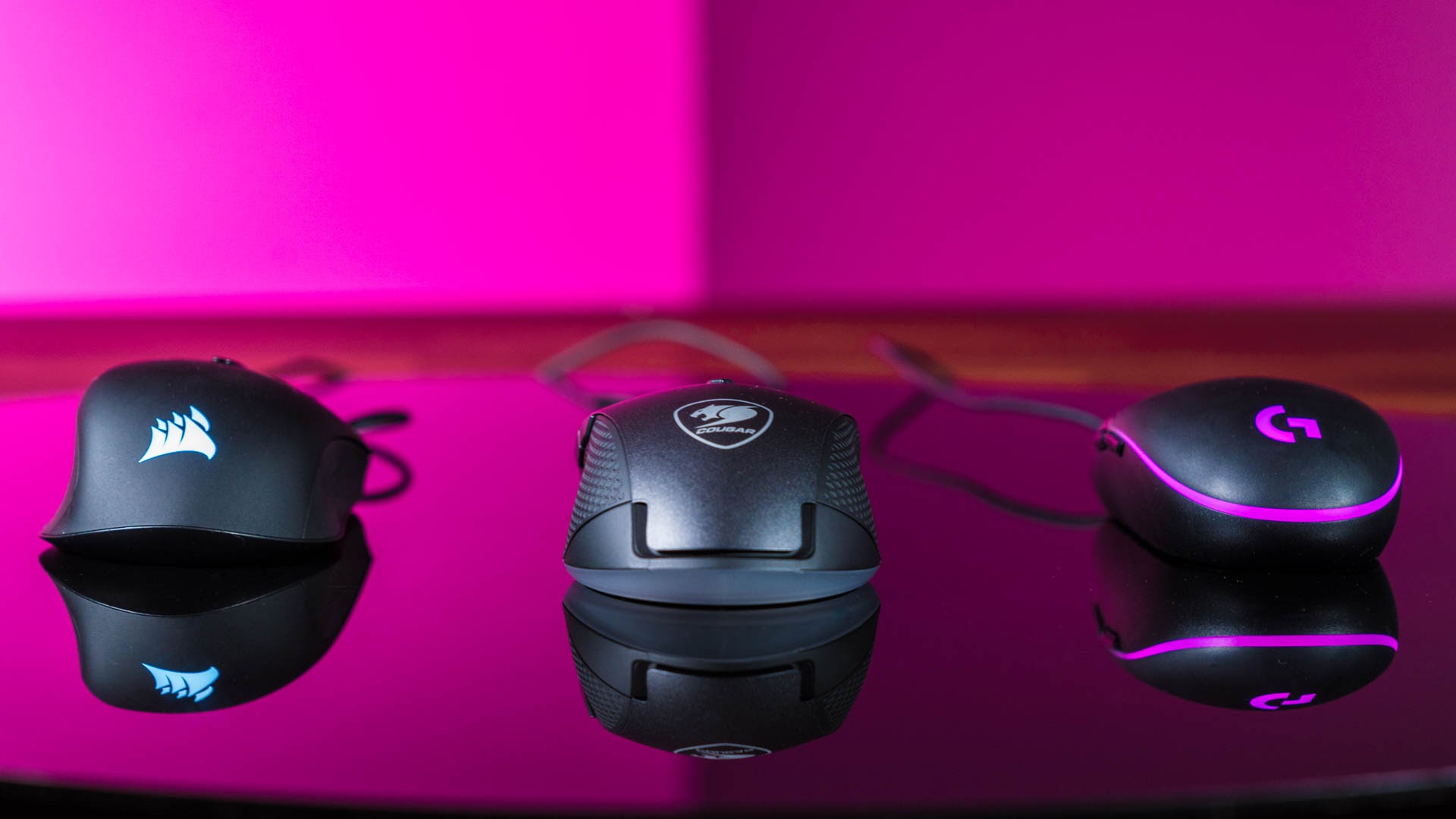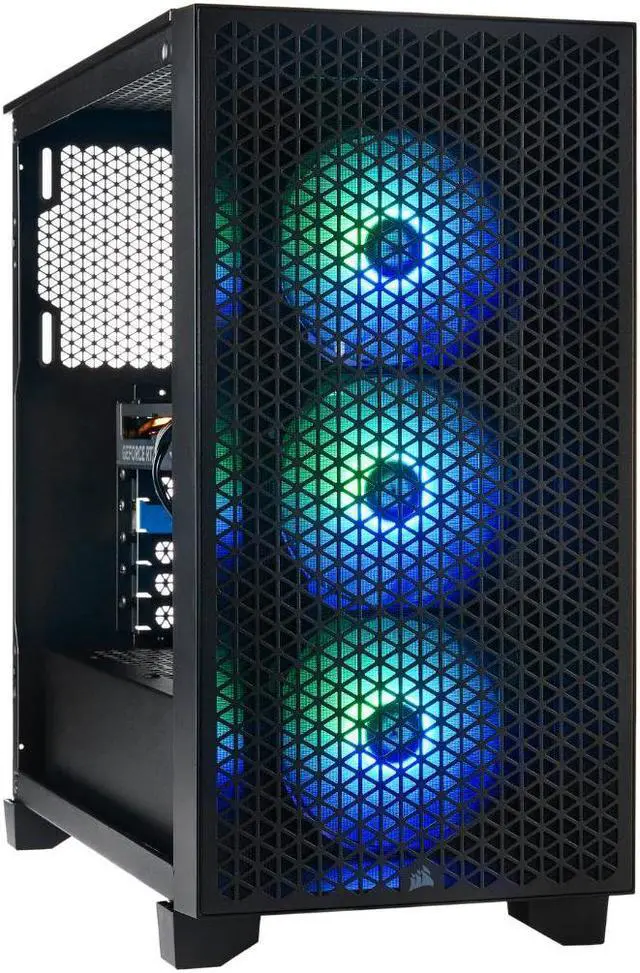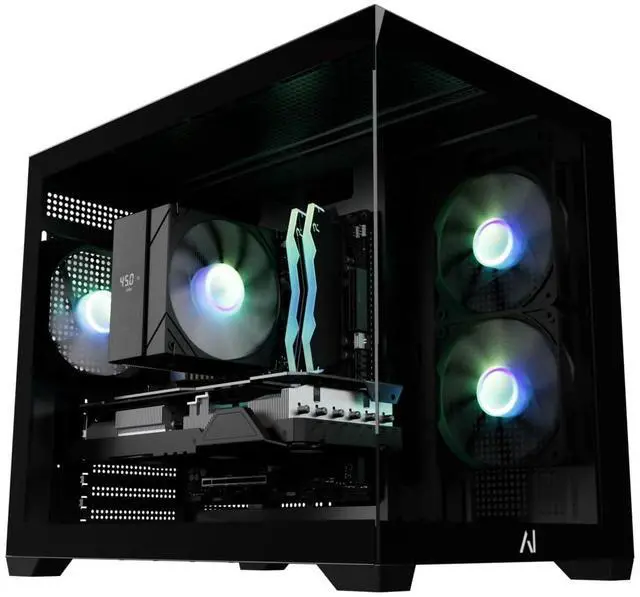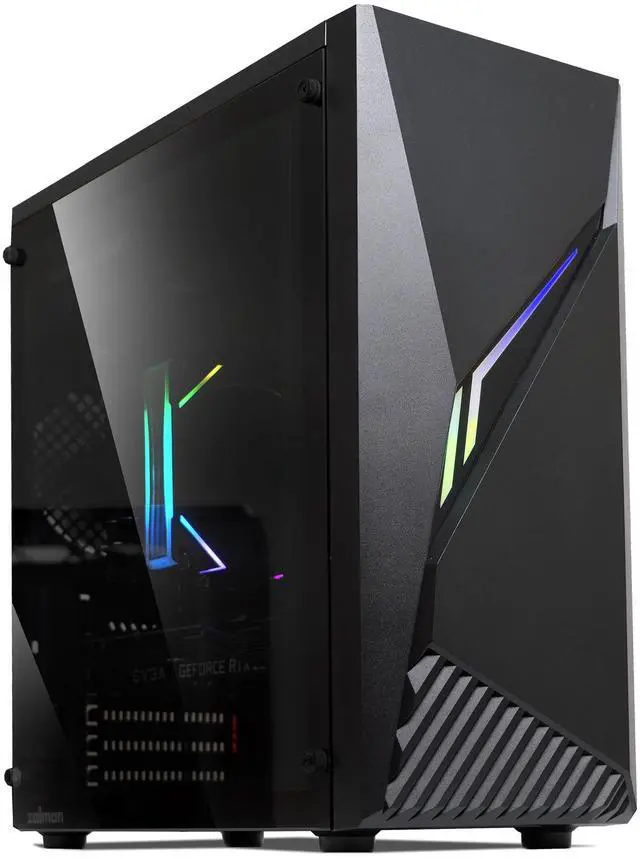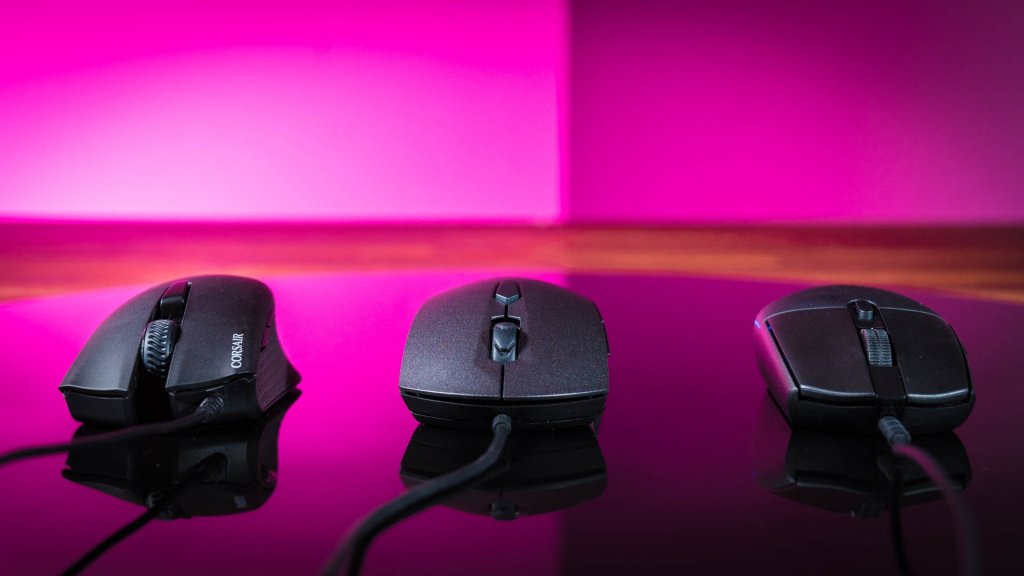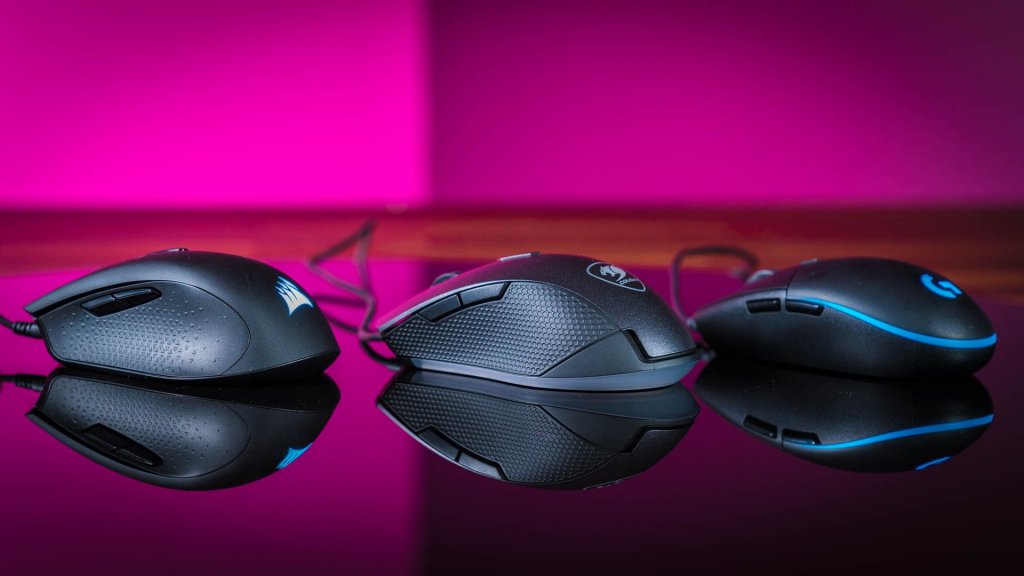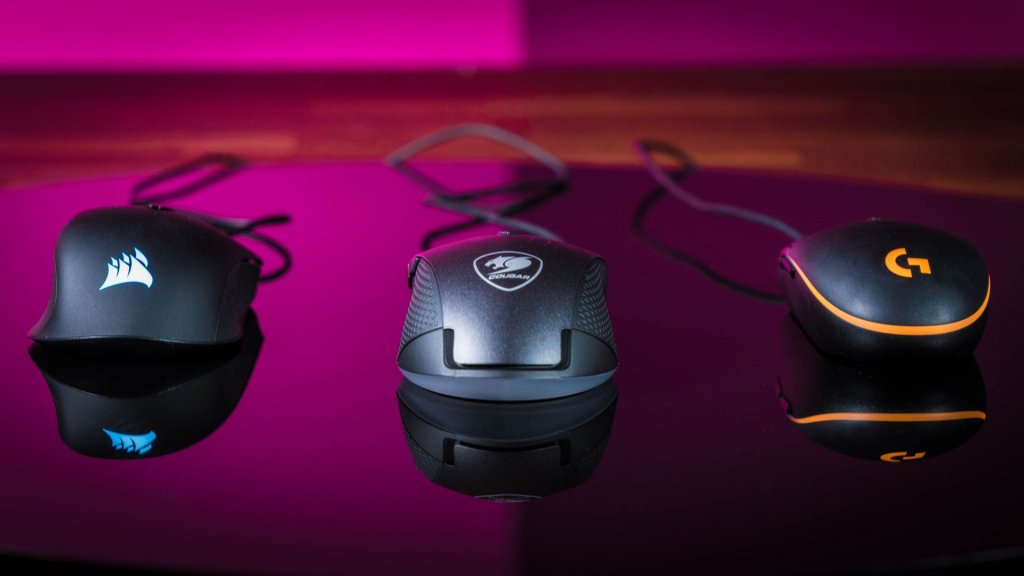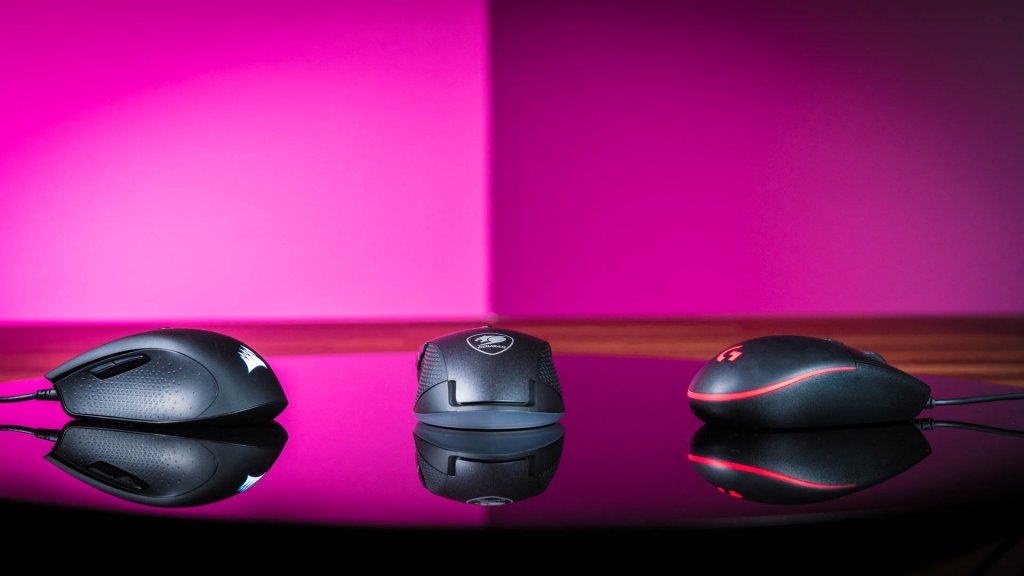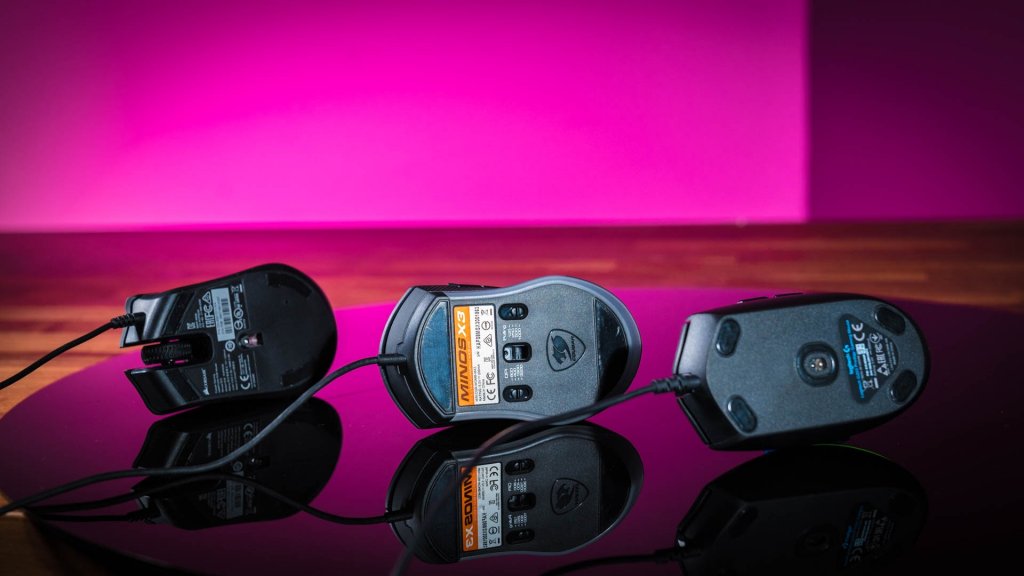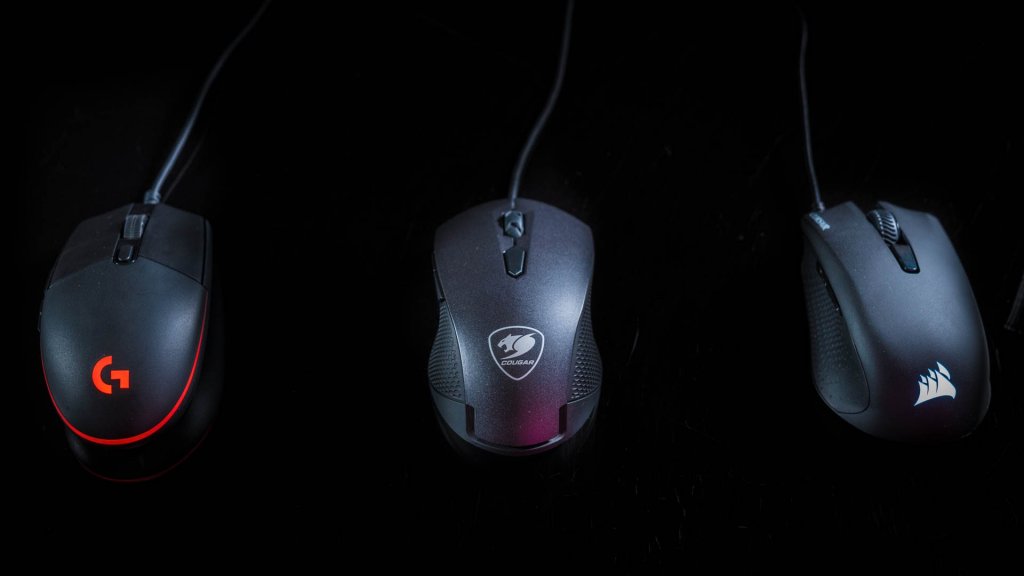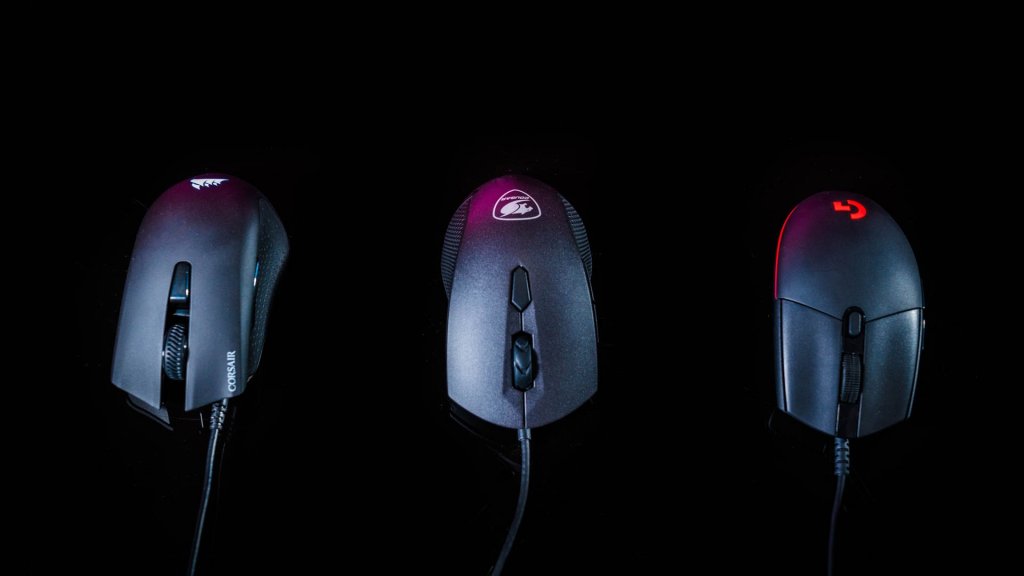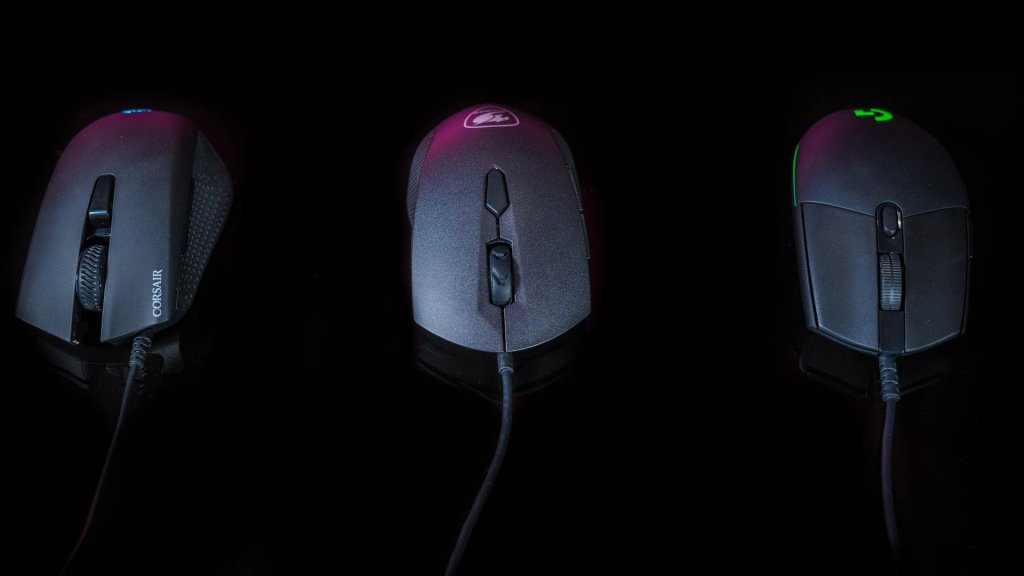It can be hard to justify spending a ton of dough on a peripheral as small as a mouse. Luckily, some of your favorite companies understand your hesitations, and have put out some good products in the very reasonable range of about $30.
But which one should you buy? We rounded up three contenders to help you decide which mouse should get your cheese.
Cougar Minos X3
- Sensor: PMW3310
- Switch: OMRON
- Weight: 94g
- Length: 122mm
- Width: 67mm
- Height: 40mm
The Cougar Minos X3 is the heaviest and biggest mouse in roundup and, for my larger hands, easily the most comfortable. The honeycomb rubber grip on the side helped me keep a firm grip on the mouse, and the side buttons were positioned nicely, though I’d love a little more tactical feel to the buttons to keep from accidentally pressing them.
However, the glide felt the worst of the three – a little too slippery for my tastes. The plastic feet on the bottom didn’t help matters much, either. The left and right mouse buttons extended too far down the body, leading to accidental clicks.
One area where the Minos X3 stood out was the inclusion of a switch on the bottom to adjust both the DPI and polling rate. I found this to be pretty ingenious, as it’s hard to tell what exactly your DPI is by other mice’s RGB lighting schemes, and I’m rarely adjusting my DPI anyway. However, for those playing competitive FPS games that may need to bump up the DPI mid-match when sniping, for example, the bottom-of-the-mouse solution is inconvenient.
Logitech Prodigy G203
- Sensor: Custom in-house
- Switch: Custom in-house
- Weight: 85 g
- Length: 116.6 mm
- Width: 62.15 mm
- Height: 38.2 mm
The Prodigy G203 from Logitech is the same size and shape as the company’s much-lauded G Pro, but with a slightly downgraded sensor and switches. However, you’d be hard pressed to tell the difference. The Prodigy G203 moves like a dream, and was the smoothest and most responsive mouse of the three by far. I tried it on a bunch of different wooden and glass surfaces and the G203 felt accurate on all of them. Whatever sensor Logitech is using, my hat is off to them.
Design-wise, I would have liked to have some rubber side grips to make the mouse more comfortable. I also wish it was slightly bigger and heavier.
Logitech doesn’t list what kind of switches they use on their website, but I have to commend them. Clicking feels fantastic on the G203 – it’s just the right level of weight and responsiveness.
Corsair Harpoon
- Sensor: Pixart PMW3320
- Switches: OMRON
- Weight: 85g
- Length: 111.5 mm
- Width: 68.3mm
- Height: 40.4mm
Construction on the Harpoon is top notch. The side grip is made entirely of textured rubber that felt great on my thumbs, and the clearly accentuated side buttons were a dream to use. The Harpoon also uses PTFE (Polytetrafluoroethylene, for those wondering) skates, giving the Harpoon a light, easy glide. The middle scroll wheel is firm but not overly stiff, needing just the right amount of force.
This is a personal preference, but I liked the Harpoon’s RGB lighting the best. It was understated and classy while still showing off.
Corsair’s Harpoon has a slightly different design from the other two mice – it’s got a big, bulbous rear end with a bottom-heavy weight distribution that you’ll either love or hate. Due to the shape, I couldn’t quite get the hang of it, and it felt downright awkward resting my palm on it. Claw or fingertip grip users won’t have a problem, though.
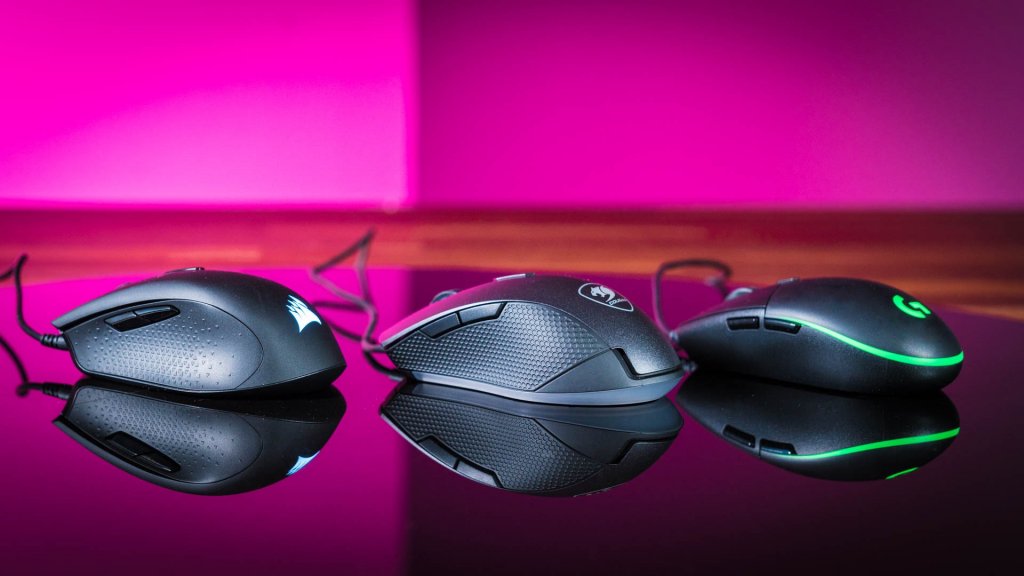
Overall, the Logitech Prodigy G203 stood out as the clear winner, having the best feel and performance for me both in-game and in normal, everyday use. But all three of these mice had aspects about them that I loved, and gamers on a budget should be thrilled that there are quality mice out there at the $30 price point.
